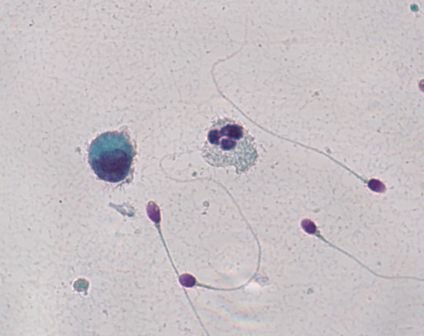April 26th, 2011 § Comments Off on Doctor’s Corner: Introducing The Blurbomatic! § permalink
 |
Doctor’s Corner
|
Electronic Medical Record systems generally are terrible. Admirably intended to render doctors’ notes legible and keep records around for a while, these systems mostly slow rather than accelerate or streamline a doctor’s work. By consuming extra, precious time, these systems can get in the way of caring for a patient.
We’ve made a little gadget in our engineering lab that may help. It’s called the Blurbomatic. It’s designed to hold the blurbs that doctors write over and over and over again in Electronic Medical Record systems, so that physicians can spend less time writing and more time taking care of patients. The Blurbomatic is also a good tool for students learning how to diagnose and treat medical problems.
Right now the blurbs are all about urology, but we’d like more doctors to contribute. If you’re an interested medical professional, please check out the site, where you’ll find instructions on how to join and add blurbs. Even if you’re not an editor, you can still use the blurbs in your notes, and if you sign up, you may comment on existing blurbs.
April 16th, 2011 § § permalink
After last week’s post about pus in semen, I thought that it might be helpful to describe another important sperm test, one that shows whether or not they’re alive.
Good sperm are alive. Not only do they swim, they live and breathe just as all living cells do. Some are dead, meaning that the ship is no longer sailing, and its motor and crew are gone.
One way of figuring out whether or not sperm are alive is to dip them in colored dye. A dead sperm can’t push the dye out of its body, but a live sperm can. In the picture, the sperm are stained with a pink dye called Eosin. The dead sperm are the ones that become pink, and the live sperm are the ones that push the dye outside and stay clear (a light bluish green in the photograph.)

The result of the test is typically described in the percentage of sperm that are alive, and of course, the more living sperm the better. But even when all of the sperm are dead, a condition called “necrospermia”, couples can still conceive using in-vitro fertilization with intra-cytoplasmic sperm injection.
That doctors can successfully use dead sperm with in-vitro fertilization illustrates a conundrum in reproductive medicine today. The ultimate barrier to fertilization is no longer the entire sperm’s health, but the quality of its DNA cargo. Unfortunately, we don’t yet have a way of knowing the condition of a single sperm’s DNA before inserting that sperm into an egg.
So if a man’s sperm don’t wiggle, the first thing to know is whether they’re alive and sluggish or whether they’re dead. A vital stain makes that distinction. But if they’re dead, a man shouldn’t despair. Dead sperm can still be used in intra-cytoplasmic sperm injection as long as their DNA is good. Unfortunately, the only way to know that right now is to inject the sperm and to see what happens.
April 4th, 2011 § § permalink
Your semen analysis results came back, and it says that you have a lot of white blood cells. What does it mean?

White blood cells are the body’s soldiers to fight invaders like bacteria and viruses, and their presence in semen might signal an infection. White cells also produce superoxide radicals, bullets that riddle sperm and its precious DNA cargo.
Here’s the problem: you might not have white blood cells at all. If you put semen under the microscope, white blood cells look exactly like immature sperm cells that aren’t a problem at all. A technician needs to stain the cells to see which cells are the bad actors. In the picture, an innocuous cell is on the left, and to its right lies an angry white blood cell. It’s easy to tell the difference because they’ve been stained. But without the coloration from staining, it would be impossible to say which was which.
Unfortunately, not all labs routinely stain semen if large round cells cells are present in high amounts. Specialized semen analysis labs typically will, but general laboratories performing many different kinds of tests may not.
If your test, with staining, confirms that you do have an unhealthy amount of white blood cells in the semen, what can you do? Culturing semen in the lab doesn’t usually reveal the bacterial invaders. The prostate turns out to be remarkably good at hiding infection, making it a difficult job to find the bug causing the problem. Doctors often try a course of broad spectrum antibiotics to attack anything that may be lurking. Another strategy is to use an antioxidant like coenzyme Q10 to protect the sperm from the white blood cell’s superoxide radicals.
But first you have to know if you’re dealing with white blood cells.



